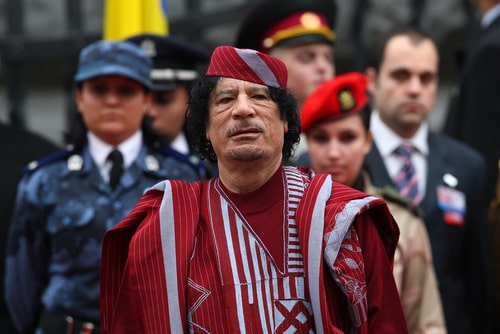Last updated on March 19th, 2020
Libya, officially the State of Libya, is a country in the Maghreb region in North Africa. It has a total area of 1,759,540 square km. Tripoli is its capital and largest city. Arabic is the official language of the country. Libyan dinar (LYD) is its official currency. Its six land bordering countries are Algeria, Chad, Egypt, Niger, Sudan, and Tunisia.
With the Mediterranean Ocean to the north and the Sahara desert to the southwest, Libya is the fourth largest country in Africa (after Algeria, the Democratic Republic of the Congo, and Sudan). As such, it is two and a half times as big as the U. S. state of Texas. With these 35 interesting facts about Libya, discover more about its history, culture, people, geography, Colonel Gaddafi, economy, food and more.
Facts about the history of Libya
1. Tripoli, the capital of Libya, was in a position to help protect American ships from attack by Barbary pirates in the 19th century (since, after all, some of them were based there!) By paying protection to the Sultan, the U.S. ships sailed the Mediterranean unmolested. When the price went up, the two countries went to war, twice, in what came to be known as the Barbary Wars.
2. In Libya’s entire history, it only had one King. King Idris reigned from 1951 until he was overthrown by Colonel Gaddafi (also spelled Qadhafi) in 1969.

3. During the latter years of Gaddafi’s regime, the country’s full official name was the “Great Socialist People’s Libyan Arab Jamahiriya”.
4. Although an Islamic nation today, Libya was an early Christian center historically.
5. Currently at least two political groups have set up governments for Libya, but only one of them is recognized as legitimate by the rest of the world. The fighting and instability in the country/region was responsible for the deaths of almost 1,800 migrants fleeing several countries in North Africa. They died trying to cross the Mediterranean Sea to Europe in the summer of 2015.
Libya’s geography and resources
6. Libya’s 1,770 kilometers (1099 miles) of Mediterranean Sea coast is the longest of any North African country.
7. The area of the Mediterranean Sea north of Libya is frequently called the Libyan Sea.
8. Much of the central and eastern area of the country is covered by the Libyan Desert. The Libyan Desert is one of the most sun-baked and arid places on earth. There is no average rainfall — the land may go for decades with no rain and the highlands for five to ten years without it.
9. North of the mountains of Jebel Uweinat the Libyan plain is dotted with eroded volcanic features. This area also contains the Arkenu structures, thought at one time to be two meteorite impact craters.
10. When oil was discovered in the 1950s, an enormous aquifer underneath much of Libya was also found. This aquifer’s water pre-dates the last ice ages.
Facts about the economy of Libya
11. Besides revues from oil exports; petrochemicals, iron, aluminum, and steel manufacturing accounts for 20 percent of Libya’s GDP.
12. Libya’s poor soils and climatic conditions severely limit how much food can be grown within the country, so it imports about 75 percent of its population’s food.
13. The Libyan dinar is the national currency.
14. Libya is home to the largest proven oil reserves on the African continent. It makes a major contribution to the world’s supply of sweet, light crude.
15. Although the World Bank names the country as an “Upper Middle Income Economy”, after years of political unrest Libya’s unemployment rate is 21 percent and the money from their oil is not benefiting the majority of its people.
Tripoli – the national capital
16. Tripoli is the capital and largest city of Libya, as well as the Port of Tripoli.
17. Tripoli is also the capital for most international businesses in the country as well.
18. Tripoli is a Greek word that means “three cities”. The Arabic name for it is Tarabulus. It is located on the edge of the desert on a point of rocky land that projects out into the Mediterranean, forming a small bay.
19. Tripoli is also known as the Mermaid of the Mediterranean for its turquoise waters and whitewashed buildings.
20. Tripoli’s old town, the Medina, still has much of its old world look. Tourists will find the Red Castle Museum here, with its vast palace complex and numerous courtyards, on the outskirts of the Medina. Here also is the Traveler’s Library.
. . . continue reading on the next page.
